The SIG factory texture on the grip isn’t bad (better than many others in fact). But there is room for improvement. Here’s an example of what the same P320 Compact looks like with a stippled grip module (done by Bowie Tactical Concepts):
Stippling varies greatly in the type of pattern, as well as how and where it is applied, but the concept is essentially universal. A smooth, even polymer surface is inherently slick. Stippling creates an uneven surface to “grab” onto your skin when you shoot – sort of like tire tread. The benefit gained from stippling is that there’s less movement of the gun in your hand caused by recoil and slide reciprocation. Less movement means more accurate shots and faster follow up shots.
I’ve been using stippled firearms for both concealed carry and competition for about the last 10 years, and I definitely see a huge improvement in my shooting performance with a stippled gun vs. most factory grip texturing. But recently I’ve been introduced to a different method of modifying the grip frame area of a polymer handgun in order to improve shooting performance – the application of silicon carbide to the grip. For the last few years, the application of a layer of silicon carbide to the pistol grip has been gaining in popularity within the competitive shooting community. So when I learned that Mark Colasante of C&C Firearms has begun producing silicon carbide grip modifications to polymer firearms, I jumped at the opportunity to have him do one for me. Besides being in the firearms business, Mark Colasante is also an accomplished competitive shooter in both USPSA and 3-Gun. Mark not only has years of experience as a competitive shooter but also years of experience modifying firearms to perform optimally in the competitive arena.
To do it right, applying silicon carbide is a labor intensive process which involves removing some material from the polymer frame to create both a functionally optimal and aesthetically pleasing application of the silicon carbide. Here’s an example of the finished product:
In the above photo, you’ll note that Mark does more than just apply the silicon carbide material to the grip – he also Cerakotes the entire grip module. He used “cobalt” on mine but a variety of colors are available. I like this color a lot on my P320 Compact – it sort of reminds me of the color that SIG uses on the Legion models:
DOES SILICON CARBIDE IMPROVE GRIP?
Unequivocally, the answer is yes. Done correctly, the silicon carbide surface application provides a texture which is both comfortable to hold and provides the ultimate in a positive purchase on a handgun frame. Of course the key here is “done correctly.” A lot of folks in the “DIY” community will try and stipple their own gun. Admittedly you can take an $8 soldering iron and poke away at your gun grip until you have a stippled gun. It may look like hell, but it will have a pattern and texture which will likely provide a better grip. Too aggressive of a texture or patten? No problem. You can use a little sand paper to make your DIY cheese grater of a stipple job into something a little less hand laceration inducing. But applying silicon carbide takes true know-how and craftsmanship. Mixing the materials properly to create the proper texture, applying them in a manner which will create a long-lasting surface, and applying it in an aesthetically pleasing manner takes skill. Trust me when I say it’s well worth the money to have a professional like Mark Colasante do a silicon carbide grip application to your gun.
IS SILICON CARBIDE BETTER THAN STIPPLING?
While the silicon carbide grip on my P320 does provide a more enhanced grip on a pistol than even stippling, it’s not recommended for all applications. I wouldn’t recommend a silicon carbide grip on a firearm which is intended to be used for concealed carry for example. Silicon carbide grip jobs are popular in the practical/competitive shooting community where holsters are typically worn more away from the body and sans any covering garments – unlike how a CCW firearm is typically carried. The surface of a firearm with a silicon carbide has a higher likelihood of catching and adhering to a covering garment (and fouling the draw) as compared to a stippled firearm grip – a very, very bad thing in a life or death event. In my opinion, having a silicon carbide grip job is best suited for a firearm that will be used competitively or recreationally.
As both a shooter in 3-Gun and USPSA, I couldn’t be happier with the silicon carbide grip application done by Mark Colasante of C&C Firearms. Thanks to the modular design of the P320 platform, it’s an ideal candidate for this type of modification. I can use my silicon carbide grip module for competition, and my stippled grip for concealed carry. Thanks Mark!
You can reach Mark Colasante at mcola@candcfirearms.com and you can visit his Facebook page by click here: C&C Firearms, LLC.
In addition to this written photo review, I’ve recorded a video supplement to get some additional footage of the grip job:
https://youtu.be/V2_WAdcMGbU


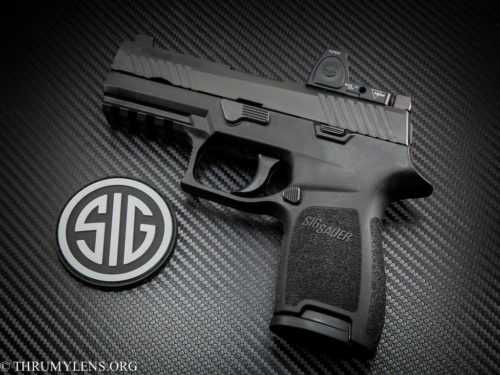
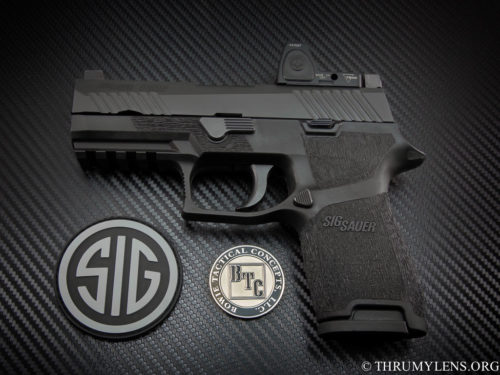
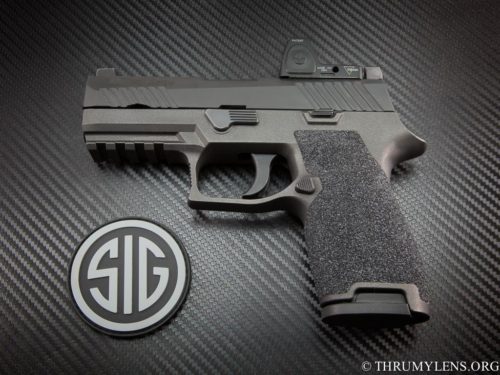
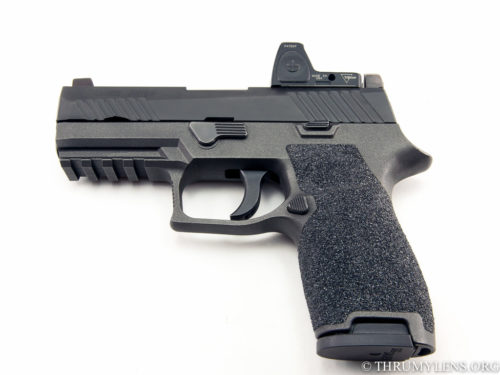
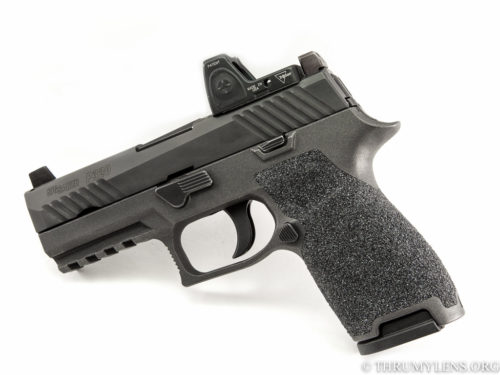
0 Comments